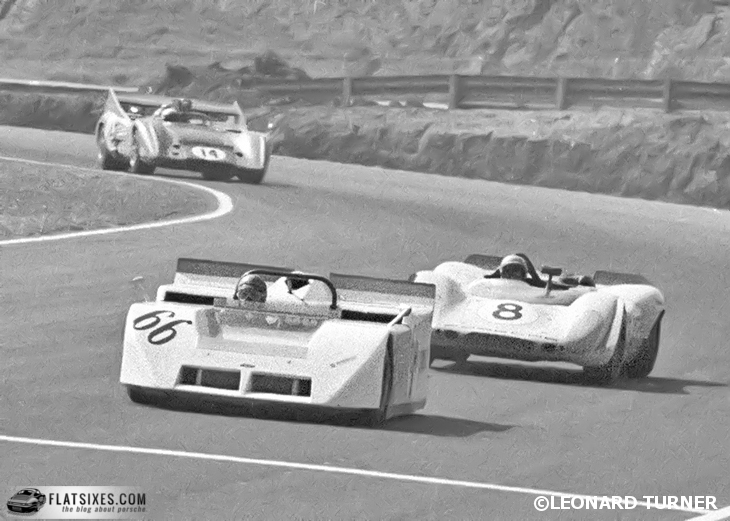The first major race at the then-new Road Atlanta track in 1970 found sports car fans in somewhat the same predicament that Formula 1 aficionados currently endure: the total domination of one manufacturer. McLaren cars, powered by big American V8s, had won the last 19 Can-Am races in a row. The grid at Road Atlanta listed 14 of these automotive beasts, their drivers including capable people like Denny Hulme, Peter Revson, Bob Bondurant, Peter Gethin and many others. The wild card that day was Vic Elford, sitting on the pole at the start in the Chaparral 2J-Chevrolet; with the auxiliary engine on board providing track-gripping suction to hold the car down in the corners, he had out-qualified everyone and owned the pole.

Tony Dean, an experienced racer but relatively little known in the States, showed up with the sole Porsche, his 908. With only 183 cubic inches, even such an agile car seemed a poor bet against the 400+ cid racers of the competition, and Dean’s chance of actually winning seemed microscopic on the open and fast Road Atlanta track. My image this time shows him having just negotiated turn twelve [literally “the last turn”], hot on the trail of Elford’s #66 Chaparral, with a Canadian M12 McLaren in pursuit.
The day was hot, attrition was heavy, Dean drove well, and his Porsche did what Porsches traditionally were known to do: make the most of their small displacement with superb reliability, handling, and brakes. Finishing the 189 mile race at an average speed of 103 mph, he was well ahead of the second place Lola T163 Chevrolet with more than three laps separating that car from the first three McLarens and the ailing Chaparral another three in arrears.
It was a break in the McLaren domination and a small foreshadowing of the Porsche 917-30 onslaught eventually to come.
